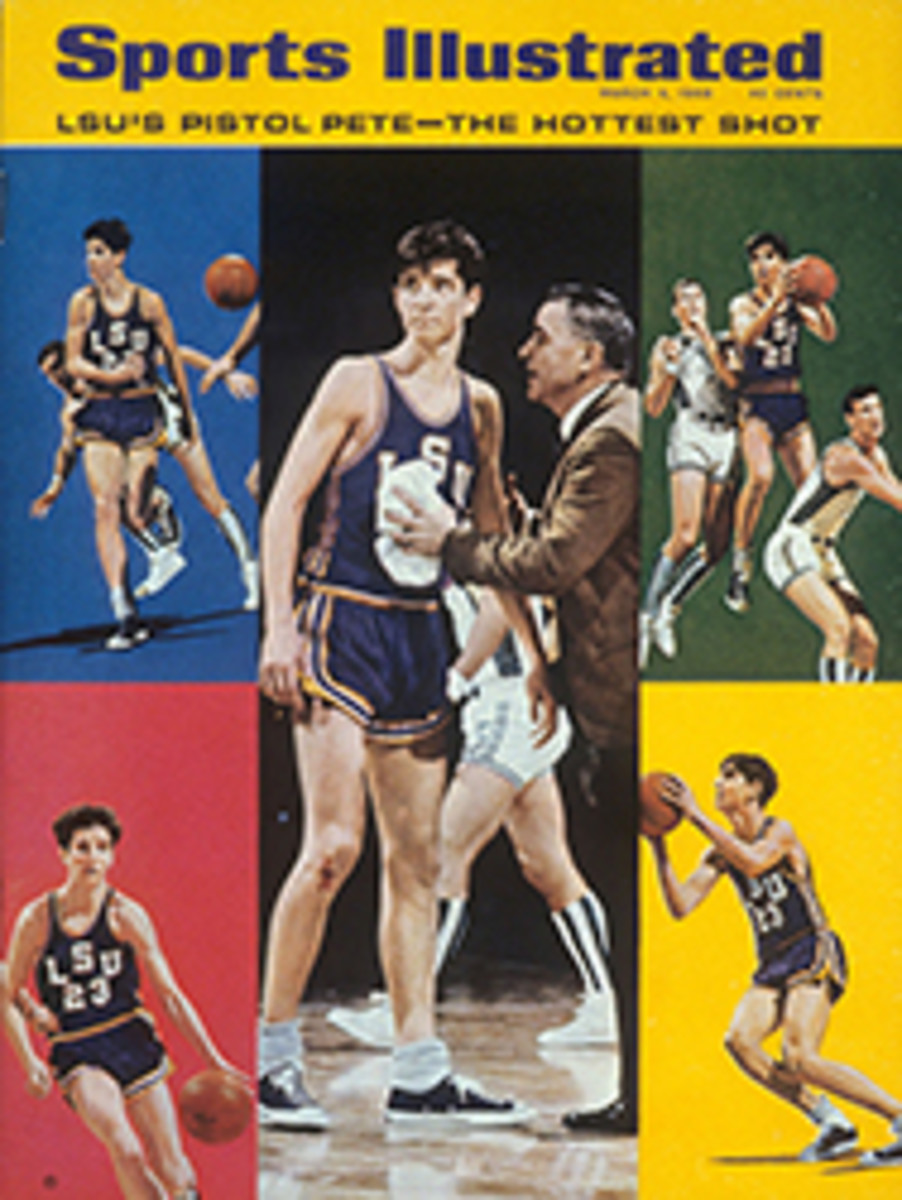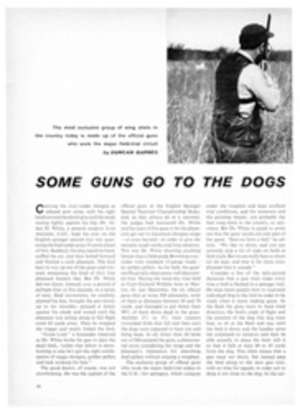
WHEN SPRING TURNS ICE TO CORN
A rare thing happens in the mountains in the spring. The sun kisses the hard pack, frozen by the clear-night cold, and transforms it into "corn"—ball bearings of swishing ice. Few skiers know its joys, since it arrives when lifts are closing and trout streams are opening. But for those who seek it—like Christl Ditforth (right) and other members of a Mt. Hood racing camp shown on the following pages—it is the most thrilling snow of all.
CORN AND WHERE TO FIND IT
The racers shown on the previous pages coursing through spring corn on the upper slopes of Mt. Hood are some of the most stylish skiers in North America. But the corn they are skiing is not their province alone. It is the kind of snow that gives extra style to any skier—novice, intermediate or expert. I had only been skiing a year when I first found corn snow. I was visiting friends in Zermatt who arranged a tour across the shoulder of the Matterhorn to catch the spring snow on the south-facing Italian side. We took Sno-Cats up to the border and waited at the customs station, over espresso and grappa, for the sun to do its work. At 10 we began our descent, following two Zermatt guides who knew the snow so well they could almost hear the frozen mountain breaking up into the miraculous crystals. The whole mountainside was skiable. Skiable! The ruts and wind drift off the packed piste dissolved at a touch of a ski, rolling away like wake from a hydrofoil. At the same time the grainy texture of the snow made edging unnecessary. Holding a turn on the steepest pitches took surprisingly little effort. Mistakes—overweighting a ski, sitting back—were compensated for by the forgiving, uplifting ball bearings of ice. Soon one found oneself letting skis go—faster and faster. We skied on and on, 14 miles in all, past the town of Cervinia, where taxis, called for from the top, waited to take us back to the town and the téléphérique. On the second run the sun was higher and the snow turning sticky before we reached the bottom. Over lunch on the terrace of the Grand Hotel, we decided to stay overnight, without toothbrushes or passports, to catch once more the perfect run.
Where and when do you find corn? It can occur in some degree, at some time in the spring, in every ski area. But it is best in the high open mountains of Europe and the American West. After a fresh snowfall it takes around three clear freezing nights and unusually warm sunny days to get the whole corning process in working order. In Europe, particularly, one should ski these conditions only with careful advice or with a guide, for in the spring there is danger from avalanches. In the U.S., where most high slopes have trees that stabilize the snow, the slide danger is not so great. Depending on how directly the sun hits the hill, you have from two to four hours of glorious skiing before the crystals turn to slush.
In most ski areas the best corn is found beginning in mid-March, and it can last as late as July. The best time is from about 10 a.m. to 2 p.m. In the late afternoon, as the sun sinks, the process starts again in reverse and the slush turns back to corn before freezing.
There are places, however, where you can follow the sun around the mountain and ski corn till your tongue hangs out. Mammoth Mountain in California is one of these. But part of the joy of spring skiing is the fun you can have off the skis. Ski hard while the going is good, then have that long relaxed lunch on a terrace—or a picnic by a swollen creek. The trout season opens when the corn is at its best, and a good way to divide the day is with skis in the morning, a fly rod in the afternoon. California's Squaw Valley, New Mexico's Taos, Colorado's Snowmass and Utah's Alta all have trout streams running through their ski areas. At Arapahoe in Colorado you can spend the afternoons sailing on nearby Dillon Reservoir. At Vail, Colo. a favorite spring tour is to hike across to the China Bowl and ski down to a creek where ptarmigan and snowshoe rabbits are startled on every side, beavers are at work and fat trout are waiting. At Jackson Hole, Wyo. you can raft all afternoon down the Snake River—a popular summer activity, but one that is at its best in the spring, before the moose and the elk have been driven away by the tourists. There are trumpeter swans and golden eagles and a backdrop of the most dramatic mountains in the U.S.
At Oregon's Mt. Hood, where the pictures on the previous pages were taken, the corn comes later—from late April till the end of July. Sno-Cats take skiers up to snowfields at 7,500 feet where portable Pomalifts are set up. You ski till noon, then have lunch, swim in an outdoor pool and ski again from 3:30 on. A sunset that turns the whole mountain a deep pink caps the day.
PHOTO
JOHN. G. ZIMMERMAN
PHOTO
JOHN. G. ZIMMERMAN
Canada's famous teacher Ernie McCulloch leads French racer Adrien Duvillard and Christl Ditforth on a fast, swooping turn through the crackle-and-pop snow of a Mt. Hood spring morning.
PHOTO
JOHN. G. ZIMMERMAN
Pepi Stiegler of Jackson Hole follows Christl down the 16° pitch of upper Mt. Hood.

